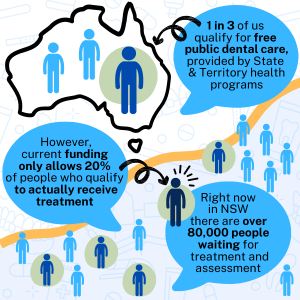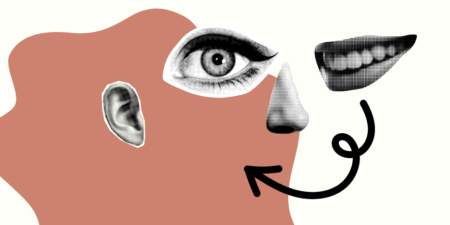IN March 2023, the Senate established a committee that was tasked with the massive job of looking into the current state of Australia’s oral health system.
The committee received 168 submissions (including one from CPSA), 17,592 survey responses and heard from 84 witnesses across 4 hearings held in different parts of the country. Evidence was compiled into a lengthy report, titled ‘A system in decay: a review into dental services in Australia’.
As you might have guessed, the findings weren’t particularly encouraging. The inquiry found that our oral health has worsened in the past 20 years. More Australians have untreated gum disease and tooth decay, and 1 in 3 adults have put off dental treatment because of the cost.
Oral health is a major site of health inequality in Australia. Essentially, around half of us have access to dental treatment and have an acceptable level of dental and oral health. The other half do not.
Things are markedly worse for people on a low income and those who live in regional and rural Australia, many of whom live more than an hour away from the nearest dentist.
Public dental is largely the domain of the States and Territories, though the Australian Government provides some funding and oversight. This means that when there’s an issue the NSW Government points to the Australian Government, who points back at them, and no one at all takes responsibility.
It is estimated that more than a third of the Australian population is eligible to receive free public dental care delivered through State and Territory health programs, but that there’s only enough funding for around 20% of that group to receive treatment.
This means that instead of 1 in 3 people being able to access treatment through the public system, it’s more like 1 in 15…which is assuming that they’re willing to wait. Right now in NSW there’s nearly 90,000 people waiting for general dental treatment through the public oral health program. There’s no data available on the average wait time, though we do know that the longest wait is for people in the Far West region. Check-ups or early treatment? Not a chance.
This is a system that is set up for failure, and a long-term lack in investment into oral health leads to worse outcomes for individuals and for our health system more broadly. It is a problem that compounds over time, becoming more painful and expensive to treat.
Government response
The inquiry’s report made 35 recommendations for ways that the Australian Government can improve access to dental care, underpinned by the principle that oral health is an essential part of general health and cannot be overlooked.
Well, more than 8 months later and the Australian Government has finally responded. Unfortunately, their response can be summarised as ‘we hear you, but that all sounds expensive and actually it’s not really our responsibility’.
Great, thank you. It’s little wonder that we are all tired of hearing about another inquiry, with another stack of recommendations that will be ignored.
Meanwhile, it’s estimated that 68% of people in aged care are either malnourished or at risk of malnourishment. Whilst there’s a range of reasons for this, oral health and ill-fitting dentures are high on the list.
The Royal Commission into Aged Care Quality and Safety recommended a Seniors Dental Benefit Scheme, similar to the existing program for children. The senate inquiry into dental services echoed this recommendation.
Beyond targeted programs, there is broad public support for dental to be included in Medicare in some way.
In the meantime, our State public dental programs desperately need investment.
Our highly paid, well-dentated elected officials must stop passing the buck. There’s been more than a dozen national inquiries and reports into dental and oral health since 1998. It’s time for the Australian Government to put their money where their mouth is, and actually do something to fill the gaping hole in our public health system.

